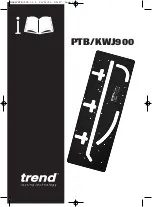
Appendix A: Troubleshooting Guide
52
Appendix A: Troubleshooting Guide
Now, next time you get a blue screen, look at it. See if the crash occurred in
echo1394.sys; if it did, it may be something we need to fix.
Restart your computer and find the most recent .dmp file – this is the memory
dump. It’s probably in a folder called “minidump” under your main Windows
folder.
Zip up this .dmp file and send it to
along with a
description of how it happened.
Problem:
When you connect a bus powered FireWire device to your AudioFire
product it does not receive power.
Solution
: Your AudioFire product does not pass power from the computer on its
FireWire connector. Use a FireWire device with an external power adapter.
Problem
: You are unable to get your DAT recorder to recognize the S/PDIF
output from AudioFire 2, AudioFire 4 or AudioFire 8.
Solution:
Digital information is transmitted in either of two modes, “professional”
or “consumer.” The
professional
mode is usually implemented in devices that are
likely to be used in professional recording environments, whereas the consumer
mode is commonly implemented on equipment designed for home use in the
consumer market. The primary difference between the two modes is in the
implementation of the SCMS copy protection bit, which, in the consumer format,
prevents the user from making digital copies of a digital copy. In most professional
equipment, this copy-protection bit can be turned off or on according to the user’s
needs. In consumer products, the SCMS bit is always enabled.
Unfortunately there is no way for the transmitting device to automatically detect
which format the receiving device is able to accept. If you have a DAT deck that is
not able to read the S/PDIF output from your AudioFire, chances are it is
transmitting in the mode that the deck is not equipped to handle.












































